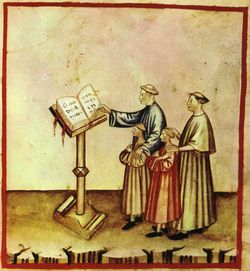First National Preventive Health Research
Programme
YELP Holistic First Business Plan
YELP Holistic First Business Plan Defined Terms
SWOT Analysis
Executive
Summary
Deliverables And Costs
Snapshot Page
To 10 Benchmark Techniques
Defined Terms for Five YELP Business Plans
Second National Preventive Health Research Programme
First BTAAP
Business Plan
Bohémian Teenagers Show Choir Programme
Defined Terms BTSCP
Second BTAAP Business Plan
Bohémian Teenagers Symphony Orchestras
Programme
Defined Terms - Bohémian
Teenager Symphony Orchestra Programme
Third BTAAP Business Plan
Bohémian Teenager Ballet
& Modern Dance
Programme
Defined Terms BTB&MDCP
Medieval Music
means
the earliest notated music of western Europe is
Gregorian Chant, along with a few other types of chant which
were later subsumed (or sometimes suppressed) by the Catholic
Church. This tradition of unison choir singing lasted from sometime
between the times of
St.
Ambrose (4th
century) and
Gregory the Great (6th
century) up to the present. During the later Middle Ages, a new
type of singing involving multiple melodic parts, called
organum,
became predominant for certain functions, but initially this
polyphony was only sung by soloists. Further developments of
this technique included clausulae,
conductus and the
motet
(most notably the
isorhythmic motet), which, unlike the
Renaissance motet, describes a composition with different texts
sung simultaneously in different voices. The first evidence of
polyphony with more than one singer per part comes in the
Old Hall Manuscript (1420, though containing music from the late
1300s), in which there is occasional divisi (where one part divides
into two different notes, something a solo singer obviously couldn't
handle).
Main article:
Medieval music
